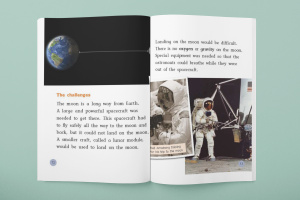Reading Instruction and Content Knowledge Are Both Enhanced with Content-Rich Texts
 In Reading for Learning: Using Discipline-Based Texts to Build Content Knowledge, Heather Lattimer (2010, NCTE) tackles the “false dichotomy” of content learning and reading instruction. The “perception, and often the policy, has been that we have to make a choice between teaching reading or teaching content.”
In Reading for Learning: Using Discipline-Based Texts to Build Content Knowledge, Heather Lattimer (2010, NCTE) tackles the “false dichotomy” of content learning and reading instruction. The “perception, and often the policy, has been that we have to make a choice between teaching reading or teaching content.”
However, reading in social studies as described by the C3 Standards (2013) involves analysis, argument, evidence, and questioning, just as the Common Core English Language Arts Standards (2010) discussed. The NGSS Standards (2013) describe reading in science as “understanding the nature of evidence used,” having “an attention to precision and detail,” possessing “the capacity to make and assess intricate arguments,” have the ability to “synthesize complex information,” be able to “follow detailed procedures and accounts of events and concepts,” and “gain knowledge from elaborate diagrams and data that convey information and illustrate scientific concepts.” Each of these understandings about reading in science is echoed with the CCSS for ELA. With these descriptions, reading instruction and content knowledge can no longer be seen as separate. This is where content-rich texts make a difference.
What Is a Content-Rich Text?
Reading content-rich texts, such as Okapi’s WorldWise: Content-based Learning™ texts, can build students’ disciplinary knowledge using literacy approaches such as Read Aloud, Shared Reading, and Guided Reading. Each of these instructional practices provides an opening for students to think like scientists and historians, while simultaneously strengthening their thinking and talking abilities in reading and writing. In these instructional contexts for literacy, students learn to recognize the purposes of texts and the varied ways authors craft those texts to communicate messages and influence readers. They gain experience in considering the effect and intentions behind word choice and language structures found in varied text types. They also learn to use reading strategies flexibly, develop the agency necessary to engage with real-life issues while simultaneously learning social and scientific content knowledge.
One such example of a content-rich text designed with literacy instruction in mind is First Steps on the Moon from Okapi’s WorldWise: Content-based Learning™ collection. Author Jenny Feely tells the story of astronaut Neil Armstrong, from his first plane ride at age six to the Apollo 11 mission and his still-existing footprint on the moon. Throughout this report, Feely inspires curiosity about and awe for this significant historical figure, inviting readers to generate questions about him and the momentous event of the first moon landing. She encourages readers to consider the huge amount of human skill, knowledge, and ingenuity that went into this significant event. Feely uses historical photographs with captions, relevant details organized chronologically, and Armstrong’s legendary quotation to powerful effect, supporting her readers to use these key details to understand bigger ideas. Her use of “steps” and “leaps” in chapter headings might be, for her intended young readers, their earliest foray into recognizing an author’s intentional word choice and use of metaphorical language in nonfiction writing. Feely’s text is a powerful example of how learning content knowledge and developing important reading strategies and skills come together.
Separating reading instruction and content knowledge is a false dichotomy. Reading and content should not be seen as disconnected, especially when content-rich texts offer meaningful instances to intentionally combine the two.
Consider how content-rich texts can support you as you integrate reading instruction and content knowledge for your students. How can you use texts rich in science and social studies content to support this integration? Debra Crouch.
